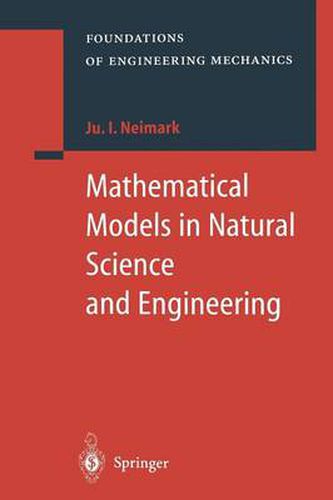Readings Newsletter
Become a Readings Member to make your shopping experience even easier.
Sign in or sign up for free!
You’re not far away from qualifying for FREE standard shipping within Australia
You’ve qualified for FREE standard shipping within Australia
The cart is loading…






This title is printed to order. This book may have been self-published. If so, we cannot guarantee the quality of the content. In the main most books will have gone through the editing process however some may not. We therefore suggest that you be aware of this before ordering this book. If in doubt check either the author or publisher’s details as we are unable to accept any returns unless they are faulty. Please contact us if you have any questions.
This book has come into being as a result ofthe author’s lectures on mathematical modelling rendered to the students, BS and MS degree holders specializing in applied mathematics and computer science and to post-graduate students in exact sciences of the Nizhny Novgorod State University after N.!. Lobatchevsky. These lectures are adapted and presented as a single whole ab out mathematical models and modelling. This new course of lectures appeared because the contemporary Russian educational system in applied mathematics rested upon a combination of fundamental and applied mathematics training; this way of training oriented students upon solving only the exactly stated mathematical problems, and thus there was created a certain estrangement to the most essential stages and sides of real solutions for applied problems, such as thinking over and deeply piercing the essence of a specific problem and its mathematical statement. This statement embraces simplifications, adopted idealizations and creating a mathematical model, its correction and matching the results obtained against a real system. There also existed another main objective, namely to orient university graduates in their future research not only upon purely mathematical issues but also upon comprehending and widely applying mathematics as a universal language of contemporary exact science, and mathematical modelling as a powerful me ans for studying nature, engineering and human society.
$9.00 standard shipping within Australia
FREE standard shipping within Australia for orders over $100.00
Express & International shipping calculated at checkout
This title is printed to order. This book may have been self-published. If so, we cannot guarantee the quality of the content. In the main most books will have gone through the editing process however some may not. We therefore suggest that you be aware of this before ordering this book. If in doubt check either the author or publisher’s details as we are unable to accept any returns unless they are faulty. Please contact us if you have any questions.
This book has come into being as a result ofthe author’s lectures on mathematical modelling rendered to the students, BS and MS degree holders specializing in applied mathematics and computer science and to post-graduate students in exact sciences of the Nizhny Novgorod State University after N.!. Lobatchevsky. These lectures are adapted and presented as a single whole ab out mathematical models and modelling. This new course of lectures appeared because the contemporary Russian educational system in applied mathematics rested upon a combination of fundamental and applied mathematics training; this way of training oriented students upon solving only the exactly stated mathematical problems, and thus there was created a certain estrangement to the most essential stages and sides of real solutions for applied problems, such as thinking over and deeply piercing the essence of a specific problem and its mathematical statement. This statement embraces simplifications, adopted idealizations and creating a mathematical model, its correction and matching the results obtained against a real system. There also existed another main objective, namely to orient university graduates in their future research not only upon purely mathematical issues but also upon comprehending and widely applying mathematics as a universal language of contemporary exact science, and mathematical modelling as a powerful me ans for studying nature, engineering and human society.